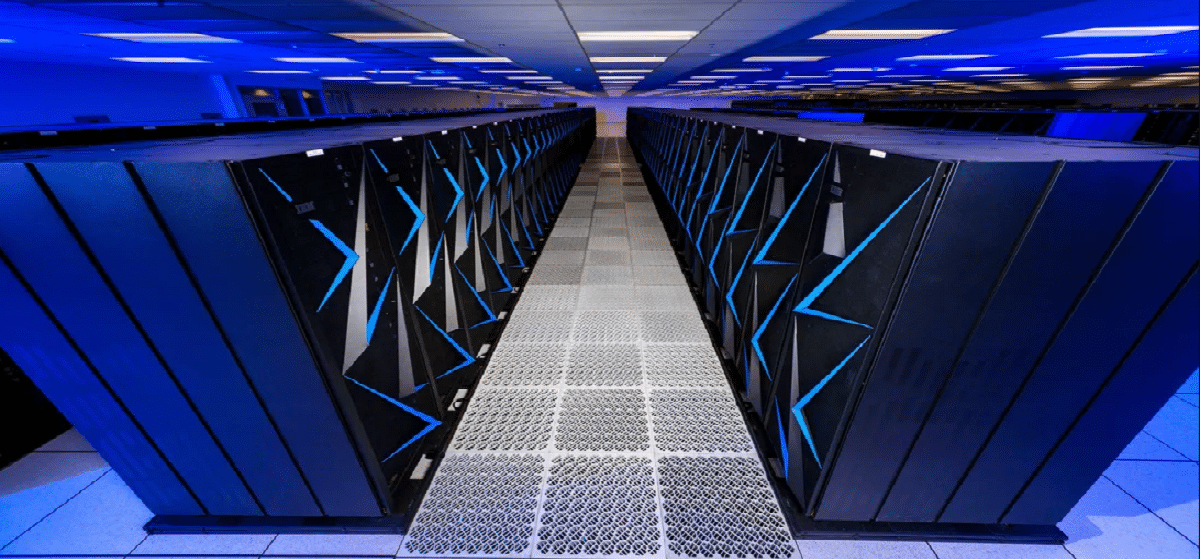
TOP500 classifies and details the 500 most powerful non-distributed computing systems in the world.
A few days ago it was announced 62nd edition of the top 500 of the most powerful supercomputers of the world. In this new edition hsome movements went up andn the positions within the top 10, since Now the second place was occupied by the new Aurora cluster, deployed at the US Department of Energy's Argonne National Laboratory. The cluster has almost 4,8 million processor cores and Provides 585 petaflops performance, which is 143 petaflops more than the previously second-place cluster.
As for the top 10, the Frontier, located at the United States Department of Energy's Oak Ridge National Laboratory, remains positioned in first place (maintaining since the middle of last year). The cluster has 8.7 million processor cores and provides performance of 1194 exaflops, double that of the second-place cluster (with lower power consumption).
The third place in the ranking was occupied by the Eagle cluster, launched this year by Microsoft for the Azure cloud. The cluster contains 1,12 million processor cores (Xeon Platinum 8480C 48C 2GHz CPU) and demonstrates a maximum performance of 561 petaflops. The cluster software is based on Ubuntu 22.04.
The Fugaku cluster, located at the RIKEN Physico-Chemical Research Institute (Japan), has moved to fourth place. The cluster is built using ARM processors and offers 442 petaflops of performance.
Fifth place is occupied by the LUMI cluster, located at the European Supercomputing Center (EuroHPC) in Finland and providing a performance of 379 petaflops. The cluster is built on the same platform as the leader of the ranking.
The sixth, seventh and tenth places are occupied by the Leonardo, Summit and Sierra clusters presented earlier in the ranking, but the eighth and ninth places are occupied by the newcomers MareNostrum 5 ACC clusters deployed in a supercomputing center in Barcelona and Eos NVIDIA DGX SuperPOD released by NVIDIA.
Regarding the trends presented in this new edition, it is mentioned that since November 2017, Linux continues to dominate the ranking of operating systems used in supercomputers.
Distribution by Linux distributions, It is listed as follows ('% current vs % from 6 months ago):
- 44.6% (47%) use Linux-based systems, but do not specify the distribution.
- 11% (16%) use CentOS (this represents a loss of 5% compared to the previous edition)
- 12.6% (10.8%) use RHEL.
- 9.6% (9.2%) use Cray Linux.
- 7.8% (6.4%) use Ubuntu.
- 4.4% (4.6%) use SUSE.
- 2% (1.6%) use Rocky Linux.
- 1% (1.2%) use Alma Linux.
- 0.2% (0.2%) use Amazon Linux.
- 0.2% (0.2%) use Scientific Linux.
On the other hand, it is mentioned that Among cluster manufacturers, Lenovo ranked first with 33,8% (six months ago, 33,6%), while HP took second place with 20,6% (20%), EVIDEN took third place with 9,6% (0% ).
In addition to this, it is mentioned that In the current ranking, the number of systems using InfiniBand technology to connect nodes has surpassed the number of Ethernet-based systems for the first time. InfiniBand is used to connect nodes in 43.8% (six months ago, 40%) of clusters, Ethernet is used in 41.8% (45.4%) of clusters, Omnipath - in 6.6% (7%). In terms of overall performance, InfiniBand-based systems account for 41.4% (35.3%) of the Top500's overall performance, while Ethernet accounts for 44% (45.5%).
The minimum performance threshold to enter the Top 500 for 6 months was 2.02 petaflops (six months ago, 1.87 petaflops). Five years ago, only 272 clusters showed a performance of more than one petaflop, six years ago 138 and seven years ago – 94). For the Top 100, the entry threshold increased from 6.3 to 7.89 petaflops, and for the Top 10, from 61.44 to 94.64 petaflops.
the overall yield of all systems in the ranking for 6 months increased from 5.2 to 7 exaflops (four years ago it was 1.650 exaflops and six years ago, 749 petaflops). The system that closes the current ranking was ranked 454 in the last edition.
Finally, if you are interested in learning more about this new edition of the TOP 500, you can consult the details In the following link.